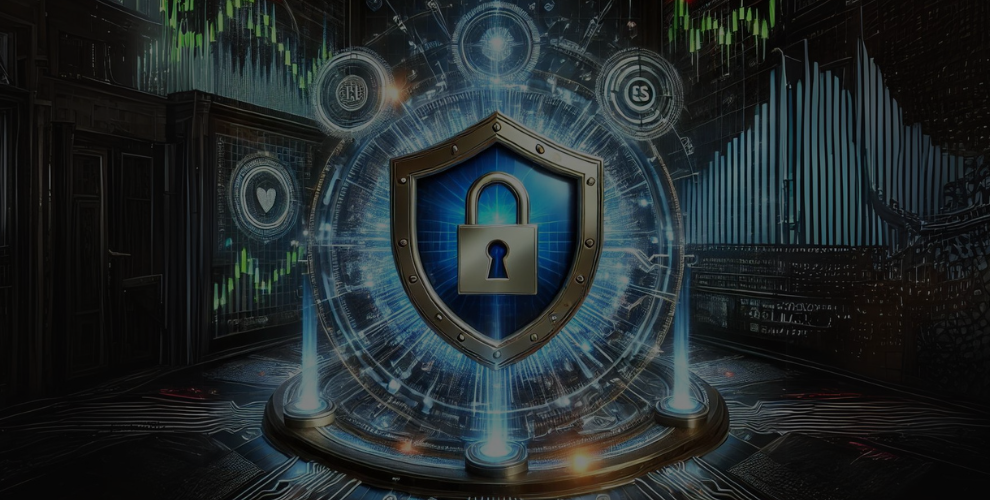
3 Cybersecurity ETFs to Invest in a Safer Tomorrow
Table of Contents
Introduction
Welcome to WikiGlitz!
We have brought you this amazing blog on “3 Cybersecurity ETFs to Invest in a Safer Tomorrow.”The growing demand has opened up lucrative investment opportunities in the cybersecurity sector, particularly through Cybersecurity ETFs (Exchange-Traded Funds).
Cybersecurity ETFs offer a diversified way to invest in the companies leading the charge in protecting digital infrastructures worldwide.
Whether you’re a seasoned investor or new to the game, understanding these ETFs can help you make informed decisions for a safer financial future.
In this article, we’ll explore three top Cybersecurity ETFs, how they perform, and why they could be a wise addition to your investment portfolio.
Key Takeaways
- Investors can reduce risks and profit from the sector’s growth by investing in cybersecurity ETFs, which provide diversified exposure to the expanding cybersecurity market.
- Investing in these ETFs can potentially provide long-term growth opportunities as cybersecurity becomes increasingly vital across various industries and regions.
- Choosing the right Cybersecurity ETFs involves understanding their performance, stock composition, and long-term potential, ensuring that your investment aligns with your financial goals.
What Are Cybersecurity ETFs?
Cybersecurity ETFs are exchange-traded funds that focus on investing in companies within the cybersecurity sector.
These companies are at the forefront of developing and providing technologies and services that protect against digital threats, such as hacking, data breaches, and cyber warfare.
These ETFs typically comprise a basket of stocks from companies involved in cybersecurity, including software developers, hardware manufacturers, and service providers.
By investing in a Cybersecurity ETF, you gain exposure to a diversified portfolio of companies, reducing the risk associated with investing in a single stock.
The cybersecurity industry is expected to grow significantly in the coming years due to the increasing reliance on digital infrastructure and the rising number of cyber threats.
This makes Cybersecurity ETFs an attractive option for investors looking to capitalize on this trend while managing risk through diversification.
Why Invest in Cybersecurity ETFs?
The digital age has brought immense convenience and connectivity, but it has also made the world more vulnerable to cyber threats.
From large corporations to individual users, everyone is at risk of cyberattacks, making cybersecurity an indispensable part of modern life.
As the demand for cybersecurity solutions grows, so does the potential for financial returns in this sector. This is where investing in Cybersecurity ETFs becomes particularly appealing.
Cybersecurity ETFs offer several benefits compared to investing in individual stocks:
- Diversification: Investing in a Cybersecurity ETF provides exposure to a range of companies within the cybersecurity industry. This diversification helps spread risk, as the performance of the ETF is not tied to the success of a single company.
- Long-term Growth Potential: As cyber threats become more frequent and sophisticated, the cybersecurity industry is expected to experience sustained growth. Cybersecurity ETFs allow investors to capitalize on this trend, potentially leading to substantial long-term returns.
- Ease of Access: Cybersecurity ETFs are traded on major exchanges, making them easily accessible to investors. They also offer the convenience of buying and selling like individual stocks, without the need to manage a portfolio of multiple cybersecurity companies.
In summary, investing in cybersecurity ETFs is not just about tapping into a booming industry; it’s also about building a safer tomorrow by supporting the companies that protect our digital world.
Things to Take Into Account While Selecting a Cybersecurity ETF
When it comes to investing in Cybersecurity ETFs, making the right choice involves more than just picking an ETF with a promising name.
There are several key factors to consider to ensure that your investment aligns with your financial goals and risk tolerance:
- Performance Analysis: Reviewing the historical performance of a cybersecurity ETF is crucial. Look at its past returns, how it fared during different market conditions and its volatility. Consistent performance over time can be a good indicator of an ETF’s resilience and growth potential.
- Stock Composition: Understand the underlying stocks that make up the ETF. Some ETFs might focus on large, established cybersecurity companies, while others might include smaller, emerging players in the industry. A well-balanced ETF often includes a mix of both, providing stability and growth potential.
- Expense Ratios: All ETFs come with management fees, known as expense ratios. These fees can eat into your returns over time, so it’s important to choose an ETF with a reasonable expense ratio that doesn’t compromise on quality.
- Diversification: Consider how diversified the ETF is. A more diversified ETF might include companies across different sectors of cybersecurity, such as software, hardware, and services. This can help mitigate risks associated with market fluctuations in a specific area.
- Market Outlook: Look at the current market trends and the future outlook for the cybersecurity industry. An ETF’s potential for growth is often tied to the overall health and expansion of the industry it represents.
By carefully considering these factors, you can choose a Cybersecurity ETF that not only suits your investment strategy but also offers a promising path for growth.
Top Cybersecurity ETFs for 2024
As we look ahead to 2024, several cybersecurity ETFs stand out for their strong performance, solid stock composition, and potential for future growth.
Here are three top Cybersecurity ETFs to consider for your investment portfolio:
ETF 1: First Trust Nasdaq Cybersecurity ETF (CIBR)
- Overview: CIBR is one of the most popular cybersecurity ETFs, with a well-diversified portfolio that includes large-cap companies like Cisco and Palo Alto Networks.
- Performance: The ETF has shown consistent performance over the years, with a solid track record of returns, particularly during periods of increased cyber threats.
- Why It’s a Good Choice: CIBR offers a balanced mix of established industry leaders and innovative newcomers, making it a strong option for both stability and growth.
ETF 2: ETFMG Prime Cyber Security ETF (HACK)
- Overview: HACK was one of the first cybersecurity ETFs launched and remains a leading choice for investors. It focuses on a broader range of companies, including those involved in cyber defense, network security, and online privacy.
- Performance: HACK has delivered competitive returns, benefiting from the increasing importance of cybersecurity across various sectors.
- Why It’s a Good Choice: With its wide-ranging exposure to different areas of cybersecurity, HACK is ideal for investors looking for a comprehensive approach to the industry.
ETF 3: Global X Cybersecurity ETF (BUG)
- Overview: BUG is a relatively newer player in the cybersecurity ETF space but has quickly gained traction. It focuses on companies that generate at least 50% of their revenue from cybersecurity activities.
- Performance: Despite its recent entry, BUG has performed exceptionally well, thanks to its focus on pure-play cybersecurity companies.
- Why It’s a Good Choice: For investors seeking targeted exposure to the cybersecurity sector, BUG offers a high concentration in companies that are directly involved in combating cyber threats.
Cybersecurity ETF Performance in 2024
As we move through 2024, the performance of Cybersecurity ETFs continues to be a focal point for investors.
The cybersecurity industry has seen significant developments, driven by the growing need for robust digital defenses across various sectors. This has had a direct impact on the performance of cybersecurity ETFs.
Key Performance Drivers in 2024:
- Increased Cyber Threats: The rise in cyberattacks, particularly on critical infrastructure and large corporations, has heightened the demand for advanced cybersecurity solutions. This, in turn, has positively influenced the performance of cybersecurity ETFs, as companies within these funds see increased revenue and growth potential.
- Technological Advancements: The integration of AI and machine learning into cybersecurity is revolutionizing how threats are detected and managed. ETFs that include companies pioneering these technologies have benefited from this trend, showing strong performance metrics.
- Regulatory Developments: Governments around the world are implementing stricter regulations regarding data protection and cybersecurity. Companies that offer compliance solutions are experiencing increased demand, further boosting the performance of ETFs that include such firms.
Looking ahead, the outlook for Cybersecurity ETFs remains positive.
As cyber threats evolve and become more sophisticated, the need for cutting-edge cybersecurity solutions will only grow, driving further performance gains in the sector.
Cybersecurity ETFs vs. Individual Stocks
When considering an investment in the cybersecurity sector, investors often weigh the benefits of Cybersecurity ETFs against individual cybersecurity stocks.
Each option has its advantages and disadvantages, depending on your investment strategy and risk tolerance.
Advantages of Cybersecurity ETFs:
- Diversification: Cybersecurity ETFs provide exposure to a wide range of companies within the sector, spreading risk across multiple stocks. This reduces the impact of poor performance by any single company on your overall investment.
- Lower Risk: By investing in an ETF, you mitigate the risk associated with picking individual stocks that may underperform. The diversified nature of ETFs generally results in more stable returns over time.
- Ease of Management: ETFs are passively managed, meaning they require less active oversight compared to managing a portfolio of individual stocks. This makes them an attractive option for investors who prefer a hands-off approach.
Advantages of Individual Cybersecurity Stocks:
- Higher Potential Returns: If you have the expertise to pick the right individual stocks, the potential returns can be higher than those of ETFs. High-performing stocks in the cybersecurity sector can yield significant gains.
- Customization: Investing in individual stocks allows you to tailor your portfolio to your specific interests and risk tolerance. You can choose companies that align with your views on the future of cybersecurity.
- Direct Exposure: By investing directly in individual stocks, you gain a more targeted exposure to specific companies that you believe will outperform the market.
In conclusion, the choice between Cybersecurity ETFs and individual stocks depends on your investment goals.
If you seek diversification and lower risk, ETFs are likely the better option. However, if you’re looking for higher returns and are comfortable with more active management, individual stocks might be more suitable.
Diversified Cybersecurity ETFs for Risk Management
Diversification is a key principle in risk management, and this holds when investing in cybersecurity ETFs.
A diversified ETF not only spreads your investment across multiple companies but also across different segments of the cybersecurity industry, thereby reducing risk and enhancing potential returns.
Benefits of Diversified Cybersecurity ETFs:
- Sector Coverage: A diversified cybersecurity ETF typically includes companies from various sub-sectors within cybersecurity, such as network security, cloud security, and data protection. This broad coverage helps mitigate the risk of underperformance in any single sub-sector.
- Global Exposure: Many diversified cybersecurity ETFs invest in companies from different regions, providing exposure to global market trends. This can protect your investment from regional economic downturns.
- Balanced Risk and Reward: By including a mix of large-cap, mid-cap, and small-cap companies, diversified cybersecurity ETFs offer a balance between stability and growth potential. Large-cap companies provide steady returns, while mid-and small-cap companies offer higher growth prospects.
Examples of Diversified Cybersecurity ETFs:
- First Trust Nasdaq Cybersecurity ETF (CIBR): As mentioned earlier, CIBR is a well-diversified ETF that covers a broad range of cybersecurity companies, offering exposure to both established leaders and emerging innovators.
- Global X Cybersecurity ETF (BUG): BUG focuses on pure-play cybersecurity companies, providing concentrated exposure to the core of the cybersecurity industry. However, it still offers diversification across different market segments within the sector.
Investing in diversified cybersecurity ETFs allows you to manage risk effectively while positioning your portfolio to benefit from the ongoing growth in the cybersecurity industry.
Long-term Potential of Cybersecurity ETFs
The long-term potential of Cybersecurity ETFs is rooted in the ever-growing importance of cybersecurity in today’s digital landscape.
As technology continues to evolve, so do the threats that target it, making cybersecurity a critical priority for governments, corporations, and individuals alike. This persistent need for advanced cybersecurity solutions underpins the long-term growth potential of the sector.
Key Drivers of Long-term Growth:
- Rising Cyber Threats: The frequency and sophistication of cyberattacks are expected to increase over time. This ongoing threat landscape ensures sustained demand for cybersecurity products and services, which in turn fuels the growth of cybersecurity companies and the ETFs that invest in them.
- Technological Innovation: Innovations such as artificial intelligence, machine learning, and blockchain are being increasingly integrated into cybersecurity solutions. Companies that are at the forefront of these technologies are likely to experience significant growth, benefiting the ETFs that include them.
- Global Regulatory Environment: Governments worldwide are tightening cybersecurity regulations, requiring organizations to adopt more stringent security measures. This creates a favorable environment for cybersecurity companies, driving their expansion and, consequently, the growth of Cybersecurity ETFs.
Historically, cybersecurity ETFs have shown resilience and growth, even during market downturns.
As digital transformation accelerates across industries, the role of cybersecurity becomes even more critical, making these ETFs a strong candidate for long-term investment.
How to Start Investing in Cybersecurity ETFs
If you’re interested in capitalizing on the growth potential of the cybersecurity industry, investing in Cybersecurity ETFs is a straightforward and effective way to do so.
Below is the guide to it:
Steps to Begin Investing:
- Research the Market: Start by researching the available Cybersecurity ETFs. Look into their performance history, stock composition, expense ratios, and overall market outlook. This will help you identify which ETFs align with your investment goals.
- Choose a Brokerage Account: To invest in ETFs, you’ll need a brokerage account. Choose a reputable brokerage platform that offers access to a wide range of ETFs, including the cybersecurity options you’re interested in. Consider factors like fees, user interface, and customer service when selecting a brokerage.
- Decide on Your Investment Amount: Determine how much money you want to invest in Cybersecurity ETFs. It’s important to consider your overall portfolio strategy and risk tolerance. Start with an amount that you’re comfortable with, and consider dollar-cost averaging—investing a fixed amount regularly—to mitigate the impact of market volatility.
- Make Your Purchase: Once you’ve selected your ETF and set up your brokerage account, you can purchase shares of the ETF just like you would with individual stocks. Monitor your investment regularly to ensure it continues to align with your financial goals.
- Review and Rebalance: Periodically review the performance of your Cybersecurity ETFs and adjust your holdings as needed. Rebalancing your portfolio ensures that it remains aligned with your long-term investment strategy.
Investing in Cybersecurity ETFs is an accessible way to gain exposure to the growing cybersecurity industry.
With proper research and a clear investment strategy, you can position yourself to benefit from the ongoing demand for digital security solutions.
Conclusion
We’ve brought you this amazing blog on “3 Cybersecurity ETFs to Invest in a Safer Tomorrow.”
As we’ve explored, the cybersecurity industry is not just a passing trend; it’s an essential component of our increasingly digital world. By investing in Cybersecurity ETFs, you can gain exposure to this critical sector, benefiting from the growth potential while managing risks through diversification.
The three top Cybersecurity ETFs we’ve discussed—First Trust Nasdaq Cybersecurity ETF (CIBR), ETFMG Prime Cyber Security ETF (HACK), and Global X Cybersecurity ETF (BUG)—each offer unique advantages, making them strong candidates for inclusion in your investment portfolio.
Whether you’re looking for long-term growth, diversification, or simply a safer investment in an uncertain world, these ETFs provide a solid foundation.
At WikiGlitz, we’re committed to providing you with insights that empower your investment decisions.
Follow WikiGlitz for more such insights on cybersecurity investments and beyond, as we continue to explore the evolving landscape of technology and finance.
FAQs
What is a Cybersecurity ETF?
A Cybersecurity ETF is an exchange-traded fund that invests in a diversified portfolio of companies within the cybersecurity industry. These ETFs offer exposure to businesses that develop and provide digital security solutions, protecting against cyber threats such as hacking, data breaches, and cyber warfare.
Are Cybersecurity ETFs a good investment for beginners?
Yes, Cybersecurity ETFs can be a good investment for beginners because they offer diversification, which reduces the risk associated with investing in individual stocks. They also provide exposure to a rapidly growing industry, making them a strong option for long-term investment.
How do Cybersecurity ETFs compare to individual stocks?
Cybersecurity ETFs offer diversified exposure to the cybersecurity sector, spreading risk across multiple companies, whereas individual stocks offer more targeted exposure but with higher risk. ETFs are generally better for investors seeking stability and lower risk, while individual stocks may provide higher potential returns for those willing to take on more risk.
What are the risks associated with investing in Cybersecurity ETFs?
While Cybersecurity ETFs provide diversification, they are still subject to market risks, including economic downturns and industry-specific challenges. Additionally, the performance of these ETFs depends on the success of the underlying companies in combating evolving cyber threats.
How can I choose the best Cybersecurity ETF for long-term growth?
To choose the best Cybersecurity ETF for long-term growth, consider factors such as historical performance, stock composition, expense ratios, and the overall market outlook. Look for ETFs that include a mix of established industry leaders and innovative companies poised for future growth.
Want to keep up with our blog?
Our most valuable tips right inside your inbox, once per month.
Error: Contact form not found.
WikiGlitz Team
Welcome to WikiGlitz, your ultimate destination for tech insights and innovation. Our expert team is dedicated to delivering free resources and professional advice on various technology topics, including Artificial Intelligence, Cyber Security, Cloud Computing, and more. We strive to empower our readers with up-to-date information and practical guidance, ensuring you stay ahead in the rapidly evolving tech landscape. At WikiGlitz, we are passionate about making complex technology accessible to everyone. Our team of seasoned experts curates content that is both informative and engaging, helping you understand and leverage the latest tech trends. Whether you're a tech enthusiast or a professional, WikiGlitz is your go-to source for reliable, expert-driven content. Join us on this journey to explore and embrace the future of technology.





